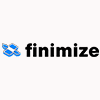Types of derivatives
There are various types of derivatives that can be traded. These all have unique characteristics that seperate them from one another, and are used by traders for different reasons. Forward and futures contracts are both used to speculate and trade on the future price movements of an asset, or as a hedging mechanism. Options allow traders to hedge against potential price declines, while swaps are used as a way to hedge against risks surrounding debt, foreign exchange movements and fluctuations in commodity prices.
Below is a breakdown of the main types of derivatives:
- Forward contracts: a forward contract involves a buyer and seller. The two agree to trade an asset at a future date, but at a price that is agreed today. The contract is settled on the agreed future date, when the buyer pays for (and in some cases, receives) the asset from the seller at the agreed price, and the profits and losses are realised based on the movement in price of the underlying asset between the start date and end date of the contract. These are traded OTC, with the terms privately agreed between the parties involved.
- Futures contracts: futures contracts evolved out of forward contracts and therefore carry many of the same characteristics. The unique aspects of futures contracts are that they are standardised and traded on exchanges, and are subject to a daily settlement procedure. This means the parties in the contract settle daily over an agreed time period, with the party that has suffered losses paying the other party that has made a profit on a daily basis.
- Options contracts: options give one party the right (but not the obligation) to purchase or sell an asset to the other at a future date at an agreed price. If the contract gives the option for one party to sell an asset it is called a put option. If it gives the option for one party to buy an asset it is called a call option.
- Swaps: swaps are a completely different form of derivative that involves two parties exchanging one another’s cash flow, or a variable attached with various assets. There are different types of swaps, some of the most common of which are listed below:
Derivatives trading example: hedging
Hedging is used as a form of insurance. As an example, fictitious baking company Baker Corp purchases and consumes a large amount of flour in order to create its products. However, the company is concerned that its margins will be squeezed if the price of flour rises in the future. Baker Corp therefore decides to enter into a contract with a supplier of flour, agreeing to purchase ten sacks of flour in six months’ time for $15 each.
Baker Corp now has a guaranteed supply of flour at a guaranteed price, protecting it from any potential increases in the spot price of flour over the next six months. In turn, the supplier knows it will be able to sell its future production at a set price, mitigating any potential declines in the spot price of flour.
Six months later, at the agreed date, the spot price of flour has soared to $20 per sack. But Baker Corp still pays the agreed price of $15 per sack, saving the $5 per extra per sack it would have had to pay on the spot market. However, the supplier has lost out, missing out on the opportunity to sell those sacks of flour on the spot market at a higher price.
Learn more with IG’s glossary of trading terms
Derivatives trading and leverage
As well as speculating on the price movement on an asset and hedging a position, traders use derivatives to increase leverage. This allows traders to take a larger position on key markets compared to the capital they must deploy, magnifying the size of both the potential profits and losses that can be made.
For example, traders may use leverage to take a position on a stock at a fraction of the cost of the actual share price of the stock.
Read more about the impact of leverage on your trading
The more volatile a market is, the more magnified the returns traders receive from trading derivatives as the price of the underlying asset moves more dramatically. Therefore, higher volatility means the value and cost of both puts and calls increase. Traders use the likes of the Chicago Board Options Exchange Volatility Index (VIX) to monitor how volatile certain financial markets are, in this case the S&P 500.
Round-up: derivatives markets
Derivatives have become popular because they are based on the monetary value of an asset rather than the tangible asset itself, allowing businesses or individuals to trade in the likes of stocks, currencies, and commodities without having to actually buy them. This allows derivatives trading to centre on and be settled in cash, without the actual asset having to be delivered.
Derivatives markets also allow traders to utilise leverage, allowing them to take a much more significant position compared to the amount of capital they must deploy, maximising the potential profits, as well as the losses.
For businesses, derivatives play a vital role in the financial system by acting as a form of insurance through the hedging process, allowing them to avoid negative price movements and mitigate losses, regardless of which way prices move.































































